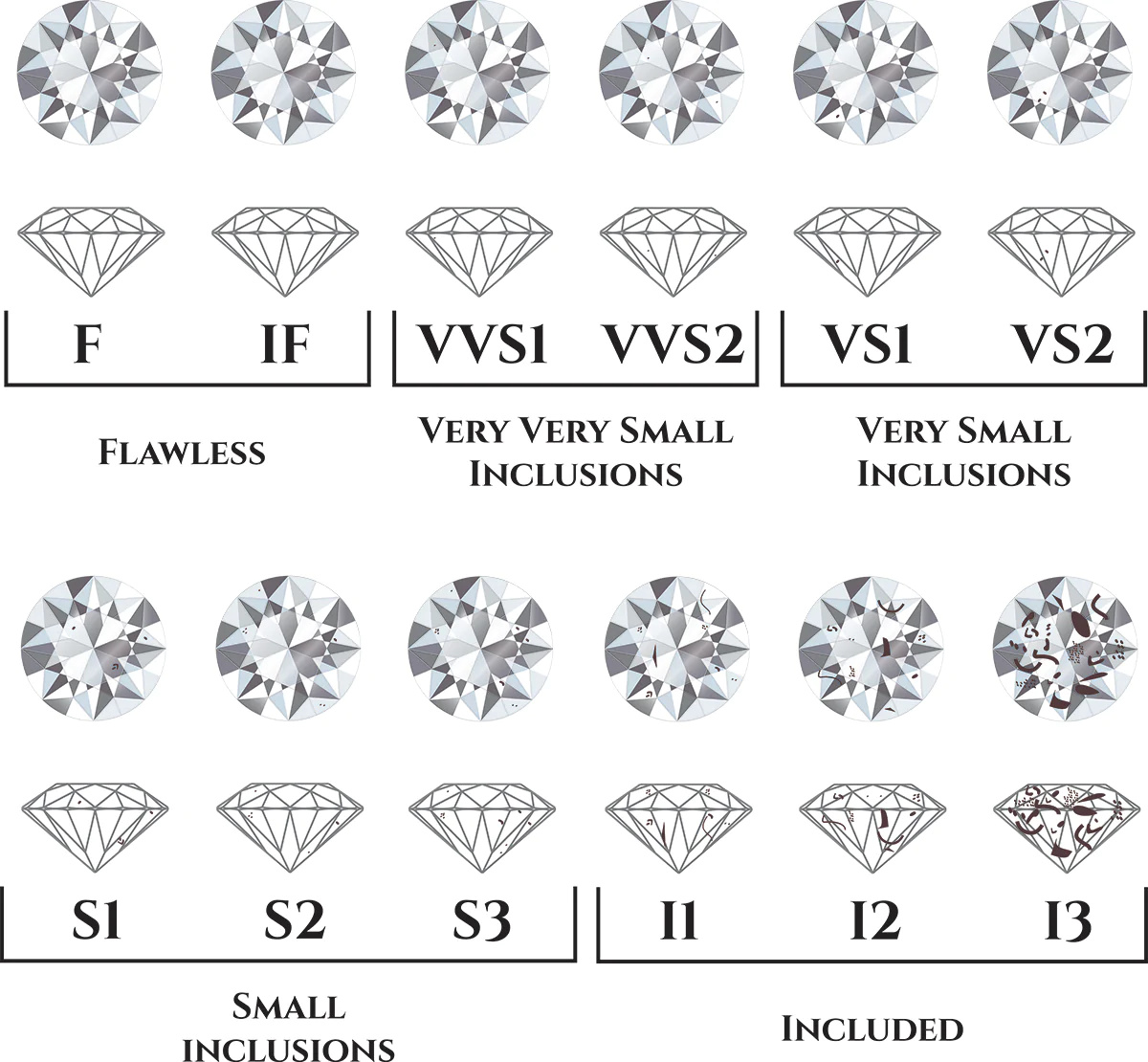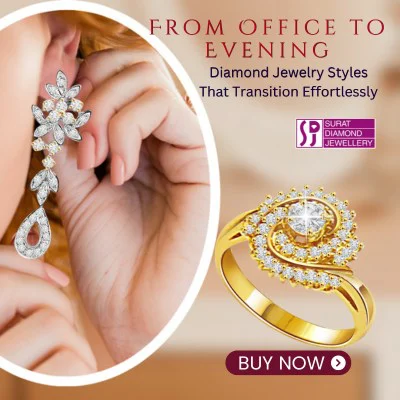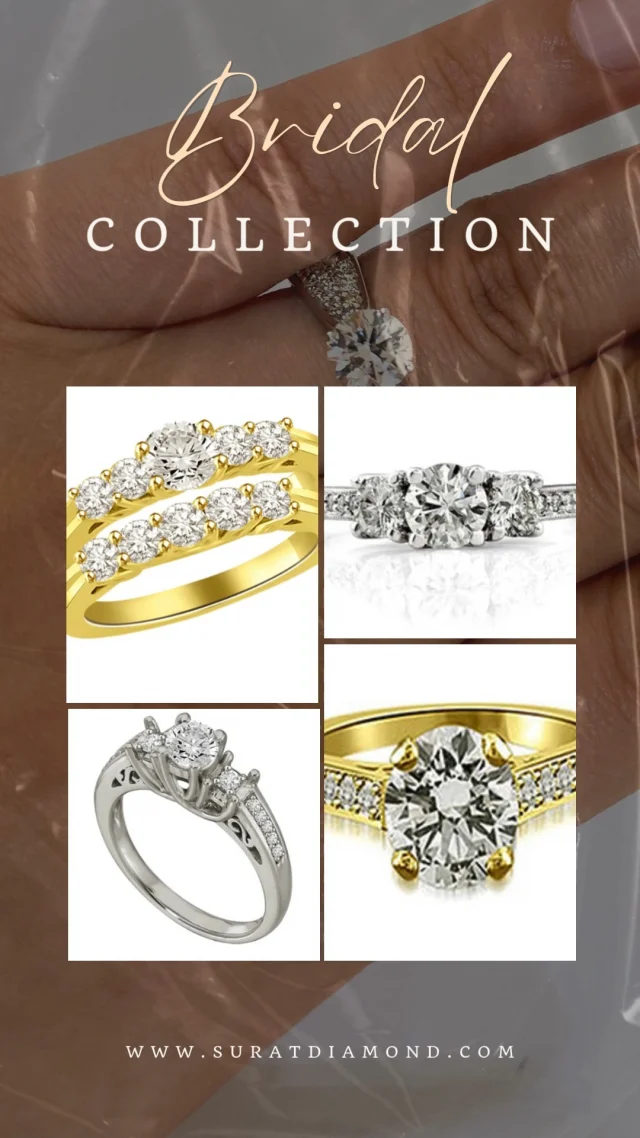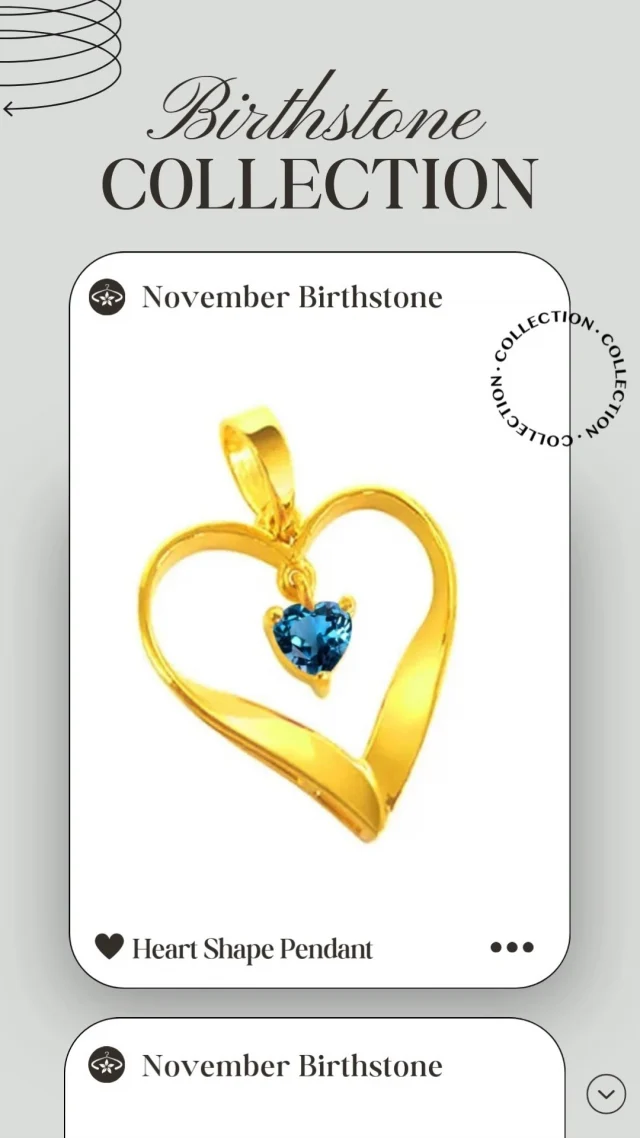Diamond Clarity – Learn more about your Diamond

Learn How To Check Your Diamond Clarity
The clarity of a diamond refers to how clear, or “clean” the diamond is. Diamonds have imperfections which are present in its rough state. The clarity scale is a measure of the severity of those imperfections or “inclusions” as it is known in the trade. Basically there are two types of flaws: inclusions and blemishes. Inclusions refer to internal flaws and blemishes refer to surface flaws. However, in the diamond grades listed below, you’ll note that none of the grades include the term “blemish” for the purposes of grading diamonds, all flaws are called “inclusions.” Inclusions include flaws such as air bubbles, cracks, and non-diamond minerals found in the diamond. Blemishes include scratches, pits, and chips. Some blemishes occur during the cutting processes (most often at the girdle). Diamonds with no or few inclusions and blemishes are more highly valued than those with less clarity because they are rarer.
How are diamonds graded for clarity?
Diamonds are graded for clarity under 10x loupe magnification. Grades range from Flawless (diamonds which are completely free of blemishes and inclusions), to Included 3 (diamonds which possess large, heavy blemishes and inclusions that are visible to the naked eye).
F Flawless: No internal or external flaws. Extremely rare.
IF Internally Flawless: no internal flaws, but some surface flaws. Very rare.
VVS1-VVS2 Very Very Slightly Included (two grades). Minute inclusions very difficult to detect under 10x magnification by a trained gemologist.
VS1-VS2 Very Slightly Included (two grades). Minute inclusions seen only with difficulty under 10x magnification.
SI1-SI2 Slightly Included (two grades). Minute inclusions more easily detected under 10x magnification.
I1-I2-I3 Included (three grades). Inclusions visible under 10x magnification AS WELL AS to the human eye. We do not recommend buying diamonds in any of these grades.
![]()
Which Clarity Grade Should I Choose?
While Flawless diamonds are the rarest, a diamond does not have to be flawless to be stunning.
In fact, until you drop to the “I” grade, a diamond’s clarity grade has an impact on the diamond’s value, not on theunmagnified diamond’s appearance.
Diamonds with VVS and VS grades are excellent choices for both value and appearance.
More affordable (and still a great choice) are those diamonds which gemologists call “eye-clean” – diamonds with no inclusions visible to the naked eye. These diamonds are SI1 and SI2 and unless the recipient carries a 10X loupe (a strong jewelry magnifying glass), she won’t see the inclusions.
As to I1-I3? Maybe when there’s a diamond grade that’s defined as “you can see the flaws just by looking at the diamond,” nothing more needs to be said.
Okay, to be “fair” to I1-I3 not everyone notices visible flaws in a diamond. And not all “visible” flaws are “equally” visible think about the difference between dripping mustard on a starched white dress shirt and dripping mustard on a brightly-colored Hawaiian shirt (not that we think you have a lot of mustard dripping experience). Obviously, one shows up a lot more than the other visible diamond flaws are like that.
But if you choose to buy an I1-I3 diamond , know that some people will look at it and immediately see the flaws — and not just experienced jewelers.






